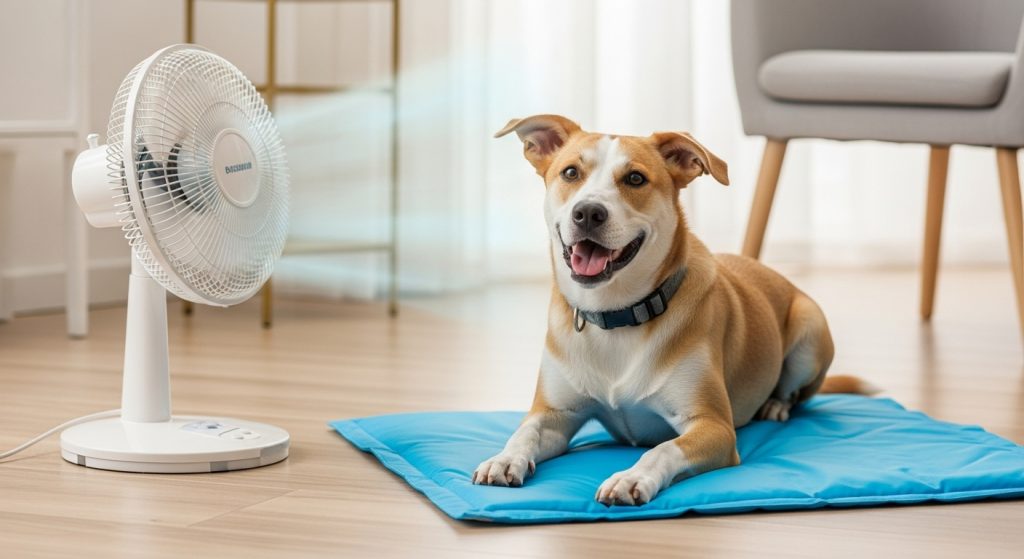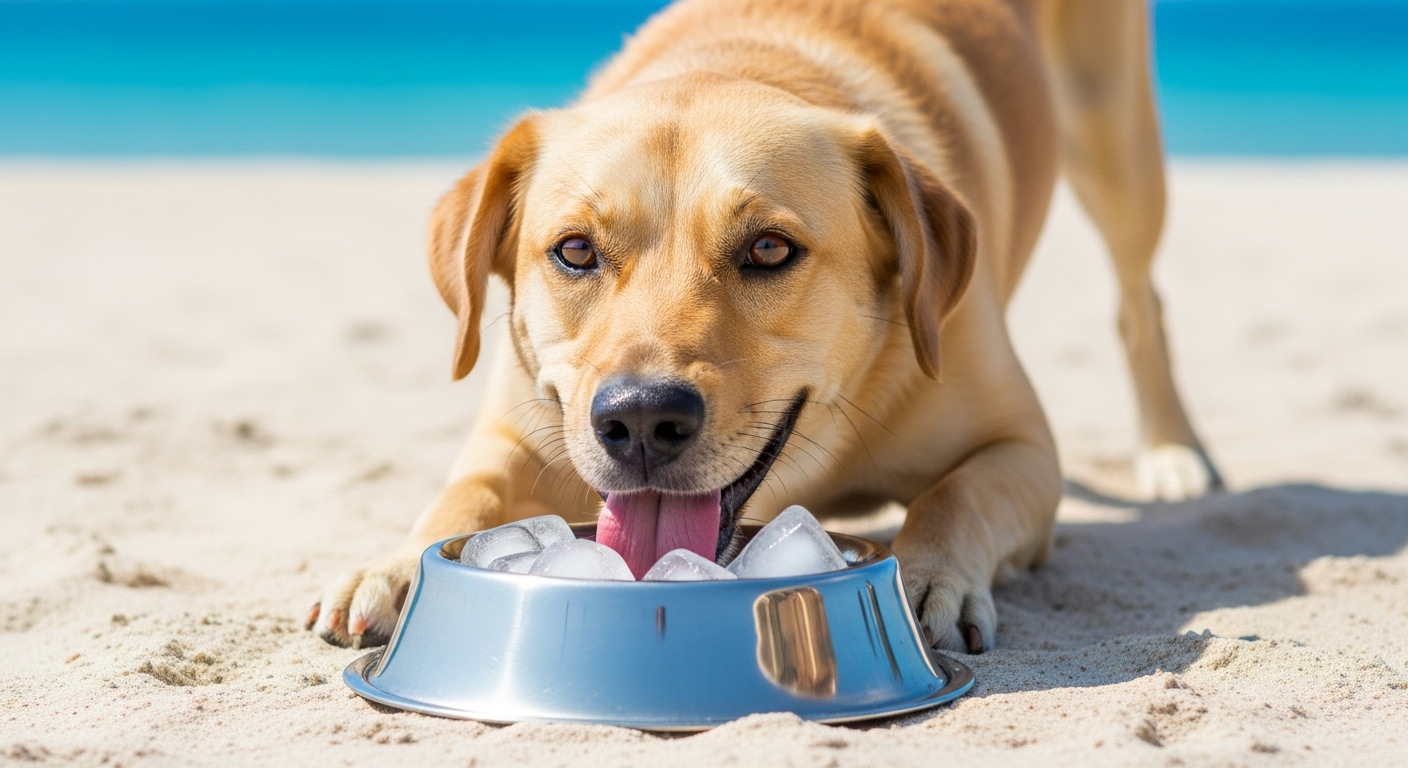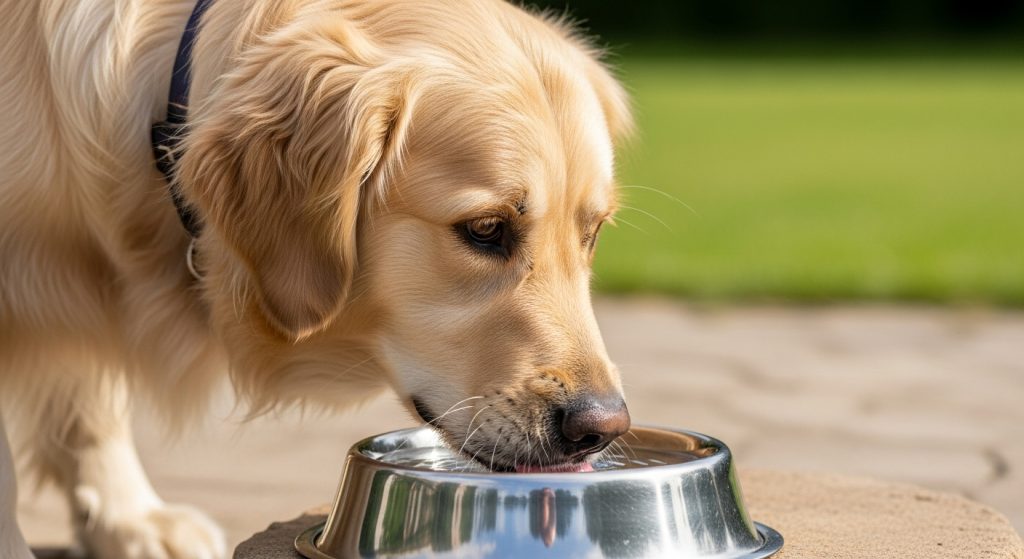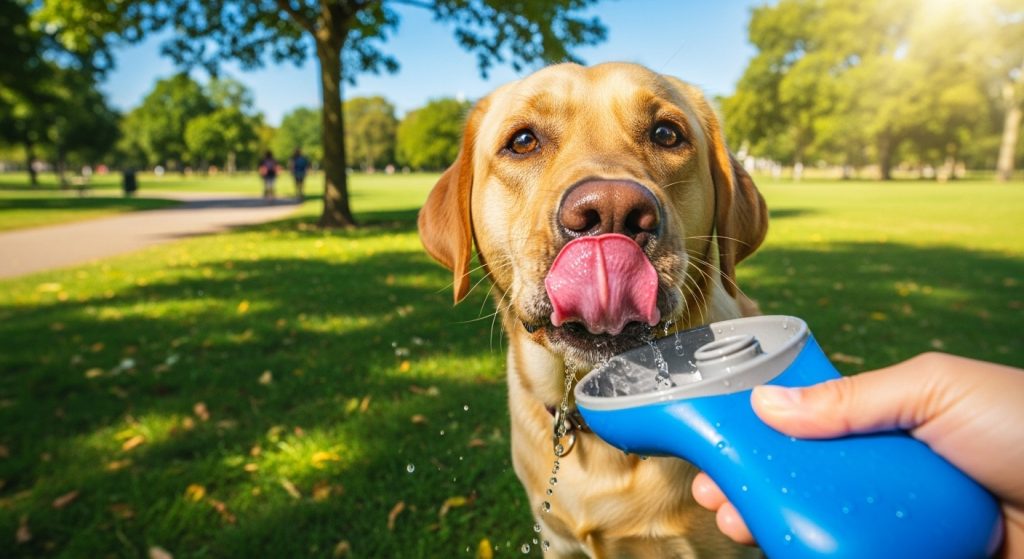When the temperatures rise, your dog’s body works extra hard to stay cool. Just like humans, dogs are at risk of dehydration, heat exhaustion, and even heatstroke during hot weather. But keeping your dog hydrated in hot weather isn’t just about offering more water — it’s about understanding their needs, habits, and warning signs before it’s too late.
This guide will help you learn how to prevent dehydration, encourage proper hydration, and create safe cooling habits so your pup stays happy and healthy no matter how hot it gets.
Understanding Dog Hydration Needs
How Much Water Does a Dog Need?
A general rule of thumb is that a dog should drink about 1 ounce of water per pound of body weight each day. However, during hot weather or periods of increased activity, this amount can easily double.
Factors like breed, age, diet, and humidity also affect water requirements. Dogs that eat dry kibble need more water than those on wet food diets. Similarly, puppies and senior dogs are more prone to dehydration.
Recognizing Signs of Dehydration in Dogs
Here are the most common symptoms of dehydration to watch out for:
-
Dry gums and nose
-
Sunken eyes
-
Loss of skin elasticity
-
Thick saliva
-
Lethargy or excessive panting
If your dog shows these symptoms, it’s important to offer fresh water immediately and, if severe, contact your veterinarian.
Why Hot Weather Worsens Dehydration
Dogs cool themselves mainly by panting, not sweating. During hot weather, excessive panting causes rapid moisture loss through their breath, increasing their risk of dehydration and overheating.
Avoid walking your dog during peak heat hours (10 AM – 4 PM) and always carry a portable water bottle when outdoors.
Smart Hydration Strategies for Hot Days
Always Provide Fresh, Cool Water
Stale or warm water can discourage your dog from drinking. Keep multiple bowls of cool, clean water around the house and yard. Adding a few ice cubes can make the water more appealing and help regulate their body temperature.
Offer Water-Rich Foods
Incorporating hydrating foods into your dog’s diet is an excellent way to boost fluid intake:
-
Watermelon (seedless)
-
Cucumber
-
Carrots
-
Apples (without seeds)
-
Wet dog food or bone broth
These snacks not only hydrate but also provide vitamins and minerals.
Use Portable Water Solutions
When heading outdoors, carry a collapsible travel bowl or a dog water bottle with dispenser. These make it easy to keep your pet hydrated during walks, hikes, or car trips.
You can also invest in automatic pet water fountains at home. Dogs are more likely to drink moving water since it’s fresher and cooler.
Avoid Dehydration Triggers
Keep your dog out of parked cars, even for short periods. Cars can reach deadly temperatures quickly. Always provide shade when outdoors and never rely solely on water if your dog is already overheating.
Cooling and Preventive Care Tips
Create a Cool Environment
Even at home, dogs can overheat. Make sure your dog has access to shaded, well-ventilated areas and avoid prolonged sun exposure.
Consider cooling aids such as:
-
Cooling mats or vests
-
Fans and air conditioning
-
Frozen treats made from dog-safe ingredients like yogurt or pureed fruit
Exercise Wisely
During hot weather, plan walks during early morning or late evening hours when temperatures are lower. Choose shaded routes and always bring water.
Avoid asphalt or concrete surfaces — they can burn your dog’s paws. Place your hand on the ground; if it’s too hot for you, it’s too hot for them.
Regular Health Checks
Regular vet visits ensure your dog stays healthy and hydrated. Some health conditions — like kidney disease or diabetes — can affect hydration levels. Discuss with your vet about electrolyte supplements or hydration boosters if your dog is active or spends time outdoors frequently.
Emergency Response for Dehydration
If your dog becomes weak, drools excessively, or collapses, move them to a cool area immediately and wet their body with cool (not cold) water. Then contact your veterinarian or the nearest emergency pet clinic.

Keeping your dog hydrated in hot weather is one of the simplest yet most vital ways to protect their health. By combining fresh water access, hydrating foods, and cooling strategies, you can ensure your pet enjoys the summer safely and comfortably.
Remember — prevention is key. Always observe your dog’s behavior and adjust their environment accordingly. With a bit of care and preparation, you’ll help your furry friend thrive even under the summer sun.



